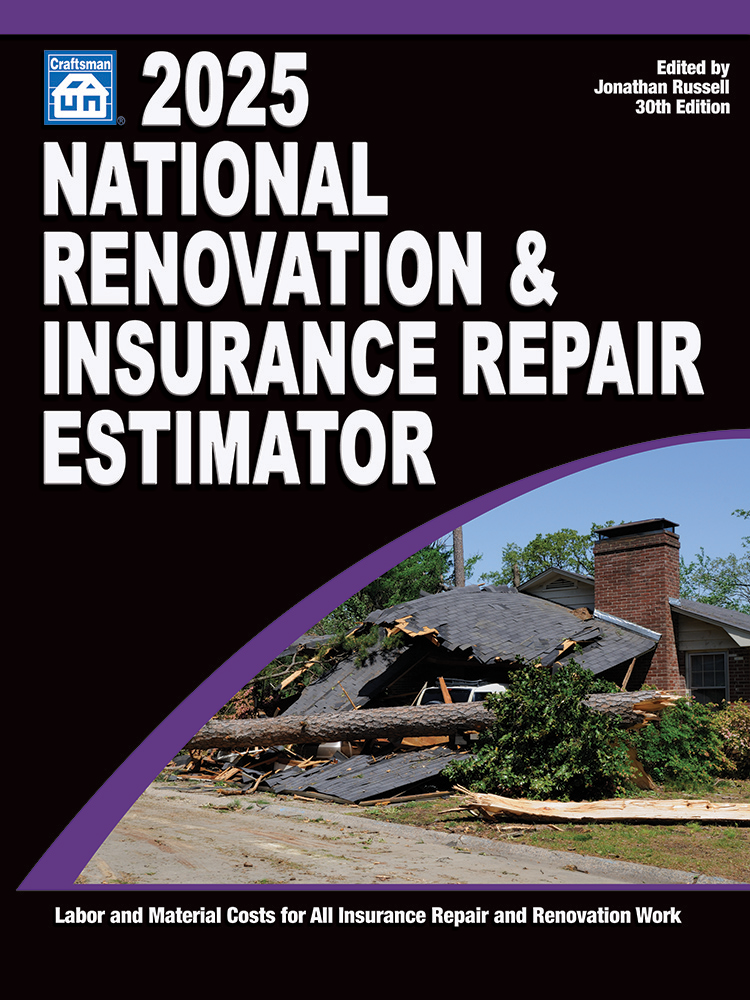Roof Repair Leads to $1 Million Mold Claim: An Insurance Claim Case Study










Virtually any job that could be associated with a water loss can create a claim for mold damages many years after a project is completed – would you be covered?
It was late in the day when I received the call from the insurance agent.
“I was hoping you could provide some advice on a mold claim for me,” he said. “I have submitted the claim to three of my client’s insurance companies and they are all denying coverage for a number of different reasons. What should I do?”
This call for help on a denied mold claim had many facets that should be of interest to all of the readers of R&R because:
- The purchasers of the home say they are sick as a result of exposure to mold in the home.
- The work performed by the restorer had nothing to do with mold remediation.
- The plaintiffs purchased the home in 2012, six years after the contractor had completed the job.
- The claim involves well over $1 million in alleged damages.
- All of the insurance claims adjusters on the business liability insurance purchased by the contractor between the time when the work was performed and when the claim was made against the contractor were denying coverage for the claim.
This one real world example of an insurance claim for mold damages perfectly illustrates most of the things I have been warning readers about for years in the pages of R&R. Before this instance, I was forecasting the problems that contractors would encounter based on what I knew about the insurance business and mold. Now I have a real-life example.
Here is what happened to this restorer:
The Loss
A home the restorer had worked on in 2008 to repair a tree-damaged porch roof was sold to a husband and wife in 2012. The work was finished without incident or complaint by the home owner in 2008. No work was done on the roof of the home itself.
The purchasers of the home decided in 2014 that the home they had purchased was infested with mold. The new owners of the home are telling the court in their lawsuit that their home is now uninhabitable and valueless, plus the husband and wife are ill as a result of living in it.
Seeking money to cover their loss, the home buyers decided to sue:
- The lender who had provided the financing on the purchase of the home without first evaluating the condition of the property,
- The home inspector who missed the mold in the home during the inspection, and
- The restoration contractor who had repaired the porch roof in 2008.
The plaintiffs are claiming more than $1 million in damages. Part of their bodily injuries caused by the mold included the inability of the husband and wife to have sexual relations. The lawsuit did not spell out how much each forgone opportunity to have sex was worth, but there were five zeroes after the number for the husband and another five-zero number for the wife. I wonder how they will put an objective number in front of the judge on that claim for damages?
Nowhere in the complaint does it mention a particular event in time between 2008 and 2014 that caused the mold, nor does the complaint offer an explanation how it could possibly be that work on a porch roof created a mold infested home that could not be lived in or why it took six years for anybody to figure that out.
Business Liability Insurance: How it’s Supposed to Work
A business liability insurance package should insure claims arising from a contractor’s operations and completed operations on a seamless basis over time. The core business liability insurance policy used to accomplish this is the Commercial General Liability (GL) insurance policy. The GL policy has some exclusions, which create insurance coverage gaps that are filled by purchasing other types of liability insurance like Automobile Liability, Workers Compensation, Professional Liability and Contractors Pollution Liability (CPL) insurance.
There are basically two kinds of coverage triggers in a business liability policy. The coverage trigger determines which insurance policy applies to a loss event. This becomes very important if no one can tell exactly when the loss happened, which is the case in this claim.
In practice, how coverage triggers should work is the subject of text books and hundreds of conflicting court cases. But for our purposes here, there are just two coverage triggers to keep in mind:
- Occurrence-based policies pay losses arising from accidents that happen during the policy period, including continuous and repeated exposure to the same accident during the policy period. Virtually all GL policies sold have occurrence-based coverage triggers. CPL policies on the other hand can be written with an occurrence or on a claims made trigger.
- A claims made-based policy will pay for all losses first discovered by the insured and which are reported to the insurance company during the policy period. Claims made policies have a retroactive date. To have the loss covered, the damages and sometimes the work itself must take place after this date that appears on the current policy.
Under a claims made policy, if the retroactive date was 2008 on the CPL policy, the CPL policy in place in 2014 when the claim was reported to the insurance company would apply to the entire loss. In other words, the policy in place at the time the insured reports the loss to the insurance company is the policy that applies to the loss - as long as the work performed took place after the date as shown on the 2014 claims made CPL policy. For a loss that takes place over time without being noticed, like mold growth inside of walls, claims made polices avoid a lot of problems in determining which policy should apply when there have been a series of insurance policies purchased over time.
I know this sounds like a lot of technical insurance jargon for an article in R&R - and it is. But this case detailed above perfectly illustrates why keeping track of the insurance policies purchased by the restoration firm over time is critically important. Always save your liability insurance policies - you just may need them many years from now.
Most restoration firms that purchased CPL policies prior to 2010 had claims made-based insurance coverage. Today, most firms purchase occurrence-based CPL policies. It takes very specific changes to the CPL policy to properly transition between claims made and occurrence coverage. If that transition is not done correctly, the contractor can end up with major insurance coverage gaps for work completed in prior years. A word of caution is needed here: if you have changed liability insurance companies and/or insurance agents between 2009 and 2011, there is a good chance that you have a historical coverage gap in your CPL coverage for the jobs performed in prior years. If you made this transition in insurance coverage, it is advisable to have a knowledgeable insurance person go back to the years the changes were made in the CPL policy to confirm the conversion was done in the right way.
In this case example, the transition between claims made and occurrence coverage was made flawlessly in 2010. In spite of this, there was still a problem getting the claim covered in 2014. The root cause of that confusion was there was a change made in the insurance companies providing the CPL coverage in that period of time and it was impossible to establish the date of loss from reading the complaint.
The Importance of Establishing Date of Loss
It is very important when making an insurance claim to advise the insurance company of the exact date the loss happened. The adjuster needs that date to know if their insurance policy applies to the loss or not.
In this case example, figuring out the date of loss for the contractor was a challenge. The lawsuit did not even mention what the contractor specifically did to cause mold growth in the home, exactly when the mold growth occurred or when the occupants were exposed to mold.
With mold potentially growing in the home every time there was a water intrusion event or elevated humidity between 2008 and 2014, a series of GL and CPL insurance policies purchased by the contractor between 2008 and 2014 could come into play to pay for the defense of the contractor.
So how do claims adjusters figure out which liability insurance policies in a series of policies over time should apply to a liability claim? In essence, they check to see if the loss happened in the coverage period of their insurance policy and if there are any exclusions that would negate the coverage.
Since the proximate cause of the loss was mold, and CPL polices are supposed to insure losses caused by mold, the CPL coverage should apply. But which CPL policy? In this case, the CPL insurance policy which was first purchased in 2009 (a year after the work was done) was converted from claims made to occurrence-based coverage in 2010. That conversion turned out to be a good thing.
But wait, the contractor was not working on a mold remediation, they repaired a roof. The proximate cause of mold in the built environment is water and water damage should be covered by the GL policy, right? A lot of contractors think that is the way things work in their insurance coverage - and they are dead wrong. Get a speck of mold involved in a loss and you can throw the GL policy out the door if it has a mold exclusion, which they have all had since 2005. The same concept applies to bacteria and Category 3 water.
How Did the Insurance Claim Turn Out?
Not very well in the first couple of weeks after the lawsuit was received by the restorer, which is why the agent called me for help. The basic problem with the claim was without a specific date of loss to point to and claims adjusters with no working knowledge about how mold grows in the built environment, all of the claims adjusters on all of the liability insurance policies were saying “it’s not my job.”
In hearing about the denied claim situation from the agent, I could think of six insurance policies purchased by the contractor between 2008 and 2014 that could have applied to this claim. However at the time of the call, three claims adjusters had already supplied the contractor with detailed letters laying out exactly why they were not going to pay for the defense of the contactor.
Here were some of the reasons given by informed and well-intentioned claims adjusters for denying the claim:
- The GL insurance company that insured the contractor in 2008, the year the work was performed, denied the water loss because mold was involved. (All informed GL adjusters will do this on losses associated with mold/bacteria and by default Category 3 water due to the bacteria it contains).
- The claims made-based CPL underwriter from 2009 to 2011 denied the loss because the work was performed in 2008, which predated the 2009 retroactive date on the CPL policies. The job itself was not insured.
- The occurrence-based CPL underwriter in the years 2011 to 2014 gave a few reasons as to why they were not going to cover the contractor for the loss. The biggest problem for the contractor was there was no specific date of loss mentioned in the homeowner’s complaint to the court and the project had been completed six years earlier.
Partial Resolution
Ultimately with some prodding on the basis that the actual exposure to mold must have happened after the home was purchased by the plaintiffs in 2012, the claims adjuster on the 2011 to 2014 CPL polices stepped in to defend the contractor in the $1 million lawsuit. The date of the actual performance of the work is not a common constraint in an occurrence-based CPL policy.
What is important to establish in making a CPL claim is when the dispersal of the mold took place that led to the loss. In this case, it had to in the 2012 to 2014 time period after the plaintiffs purchased the home. The contractor was lucky in this regard - there was only one underwriter on their GL and CPL coverages during the 2012 to 2014 period. When presented with the facts, that insurance company stepped up to the plate to defend the contractor.
In contrast, if the contractor had purchased CPL policies from three different insurance companies between 2011 and 2014, I suspect that we would have three claims adjusters telling the restorer “it’s not my job.”
Advice
This was a perfect case example to illustrate why:
- Real or perceived water intrusion related to a contractors work can lead to uninsured mold losses many years after a project was completed.
- Changing insurance vendors can create coverage gaps for future claims arising from completed operations.
- It is very important to come up with a good liability insurance design on the firm and stick to those vendors to create insurance coverage continuity over time, as 90% of restoration firms today have inherently flawed GL to CPL coverage interfaces. Those flawed insurance designs need to be fixed before a contractor decides to stay the course with their insurance vendors. There is no advantage in perpetuating an inherently flawed liability insurance coverage design - in fact, it just makes the problems worse in the face of a nebulous completed operations claim like this case example. If your GL policy is with a different insurance company than your CPL policy and the GL policy has a fungus/bacteria exclusion endorsement on it, you can be more than 90% certain that you are buying inherently flawed liability insurance coverage.
- If you ever made the historical transition from claims made to occurrence-based CPL coverage, that transaction should be audited today to evaluate if that insurance coverage transition was done the right way. If a historical coverage flaw is detected before there is a loss, there are some prospective options available to correct the fatal coverage flaws that result from a bad transition.
- When faced with a mold/bacteria/Category 3 water loss, immediately seek out expert advice on how to present that claim to your insurance companies. The way you present the claim to the adjuster can avoid a lot of headaches and lost sleep.
Conclusion
There are three things every contractor should do to avoid such a problem with claims adjusters on mold/bacteria/Category 3 water claims.
- Verify that your CPL coverage has continuity of coverage for your completed operations.
- Lock onto a functional liability insurance design and stay the course with your insurance vendors as long as you can. Changing insurance vendors creates unneeded complexity and coverage gaps in a claims situation that spans multiple policy periods. However, do not lock on to a fatally flawed insurance design.
- If a claim is made against you seeking damages associated with mold/bacteria/Category 3 water, get expert help in reporting that loss.
Virtually any job that could be associated with a water loss can create a claim for mold damages many years after a project is completed. Highly specialized liability insurance coverage is needed to address these loss exposures. The contractor in this example had purchased state-of-the-art liability insurance coverage since 2010 and still encountered problems getting the claim covered. At the end of the day, this contractor had liability insurance. Many would not be as lucky.
Looking for a reprint of this article?
From high-res PDFs to custom plaques, order your copy today!













